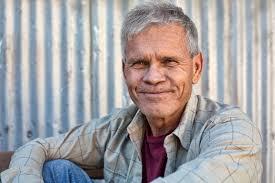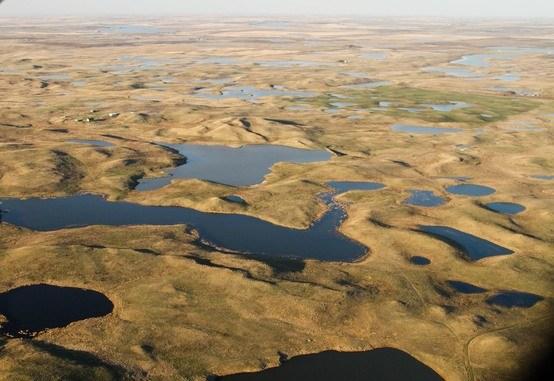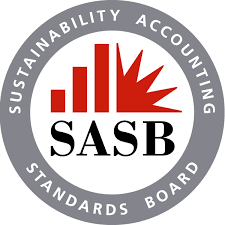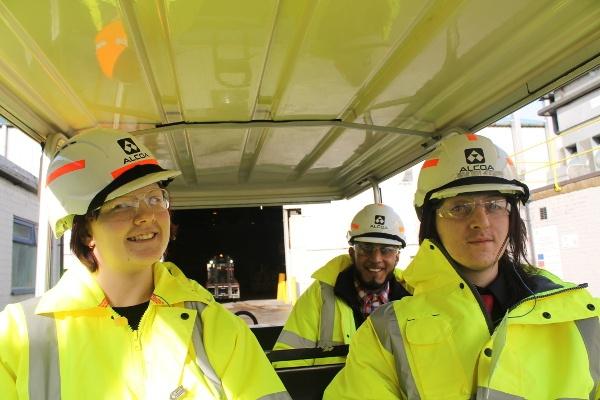SolarCity and Buffalo’s Transformation


Buffalo, New York, is now digging itself (or actually melting itself) out of mountains of snow, but the recent megastorm and its cold winters are not going to stop the city from becoming an important solar energy hub. Earlier this fall, SolarCity announced it would build a 1.2 million-square-foot photovoltaic solar panel factory, which will be one of the largest in the world, on the site of a former steel mill in Buffalo. The massive factory, another one of Elon Musk’s projects, in part is happening because of the state of New York’s doubling down on solar as an economic generator in the Empire State.
But subsidies and tax credits are not the only reason why SolarCity chose Buffalo to build what will soon be the largest solar factory in the western hemisphere. As in the case of its “rust belt” cousins, Cleveland, Detroit and Pittsburgh, Buffalo offers companies such as SolarCity many benefits: solid universities churning out fresh and hungry graduates, affordable living, a renewed optimism and an urban environment many millennials currently crave. The result is that an industry usually identified with Silicon Valley and America’s Sunbelt could play a large role in Buffalo’s resurgence.
Of course, it helps that New York is joining other northeastern states, including New Jersey and Massachusetts, in developing an aggressive renewable energy agenda. And most of New York’s focus on economic redevelopment has been on the western part of the state, which has long struggled due to the decline in manufacturing. Now those manufacturing sites are offering clean energy investment opportunities, such as a wind power and solar project underway on what was formerly a huge Bethlehem Steel facility. These changes have not been lost on the local press, which has touted the new industries rising on sites long dormant and what had been a depressing reminder of what Buffalo used to be. After decades of brain drain, Buffalo is starting to experience an uptick in 'brain-gain.'
The result of this new wave of optimism is that more millennials, who do not have a memory of Buffalo’s past as a manufacturing hub, are moving back to the Lake Erie region as they seek jobs in new sectors that are demonstrating strength. Considering the interest millennials as a group show towards renewable energy and environmental issues, it will hardly be a surprise of Buffalo becomes a new energy hub. Local activism is also having a role in raising awareness of energy efficiency and the role green jobs can have in boosting the local economy.
Buffalo is hardly out of the woods. As in the case of many cities, education and health care are still the city’s main drivers of economic growth while the renewable energy industry is still at a relatively nascent stage. Not everyone is buying into the Queen City’s turnaround: 100 years ago it was one of the 10 largest cities in the U.S., but it has long been in decline, though there is a chance of a slight increase in the next few years. Nevertheless, the SolarCity project, which is now is five times the size of its original plan, will send a signal to other companies that doing business on the shores of Lake Erie is a smart move. Plus, a massive factory can have a multiplier effect, similar to what Musk’s plan to build batteries in Nevada may do for the Reno area. Urbanization and the new industries associated with this long-term trend could result in a very different Buffalo a decade from now.
Image credit: Fortunate4now
Leon Kaye is based in California and most recently worked for a renewable energy investment company in the Middle East. Follow him on Instagram and Twitter. Other thoughts of his are on his site, greengopost.com.
Pepsi True Savaged on Amazon Over Palm Oil Controversy


Less than two months ago PepsiCo hyped a new soft drink product, Pepsi True, as an alternative to the high fructose corn syrupy sweet and artificially sweetened zero-calorie options the company has long pitched to consumers. This new drink, sweetened with stevia root, promised to be “a new kind of cola that is almost too good to be true” and was rolled out for sale exclusively on Amazon.
Unfortunately for PepsiCo, there has been a slight hiccup. Many activists, upset over what they see as the company’s less than robust sustainable palm oil policy, are not cutting Pepsi True any slack, and are mercilessly heckling PepsiTrue with bad reviews. According to Sustainable Brands, the ringleaders are SumOfUs.org and Rainforest Action Network. Last week the outcry on Amazon was so loud PepsiCo pulled the product from Amazon, then reinstated it, only to have complaints still flying in.
“Let's push Pepsi to buy palm oil from sustainable sources!”
“This truly is a terrible product from a truly terrible 'rainforest destroying' company”
“PepsiCo can’t prove that its palm oil supply chain is 100% deforestation free and right now it has no plans to change that.”
Not quite the “I really liked the taste of this drink, have lost weight from the switch, but if only the can were a slightly different shade of green” review the beverage giant was counting on, was it?
According to Rainforest Action Network, PepsiCo has been one of the slowest multinationals to adopt a more sustainable palm oil policy. While other companies including Unilever, Cargill, Dunkin Donuts and ConAgra have been making changes within their supply chains, RAN claims PepsiCo has been dragging its feet. Conventional palm oil, or what RAN and its peer organizations now call “conflict palm oil,” has been responsible for environmental destruction, the abuse of land rights and child labor. And with PepsiCo’s consumption of over 450,000 metric tons of palm oil annually to make Cheetos, Stacy’s Limited Edition Salted Caramel Pita Chips and Tostito’s, the company is a huge procurer of palm oil.
RAN and its allies, however, have lashed out at PepsiCo for its lack of a sustainable palm oil policy and for not acknowledging any damage its supply chain has caused in countries such as Indonesia and Malaysia. In turn PepsiCo announced a revamped palm oil policy to take place by 2016, but the company’s critics claim the changes do not go far enough. The NGO SumOfUs.org is among the organizations dismissive of PepsiCo’s tactics, describing the commitment as “weak, especially on slavery, enforcement, and a plan for implementation.” Meanwhile PepsiCo has reacted in kind, claiming the outcry an "orchestrated effort" to misinform consumers.
PepsiCo, meanwhile, has been stubborn in its insistence that its policy is strong enough, and has reacted to the review sabotage on Amazon with an aggressive public relations campaign. Clearly, any of us who have earned a one-star review would react with consternation, so imagine the teeth grating at PepsiCo headquarters with 3,900 negative reviews rolling in over the weekend. But with companies including Nestle, Mars and P&G among the other global firms committing to sustainable palm oil, PepsiCo’s tepid policy is making it stand out for the wrong reasons. Its competitors are committing to plans that include transparency, tractability and full safeguards for human rights.
PepsiCo’s reputation, especially as consumers become more aware of the dangers of palm oil, would be quickly repaired with a more watertight policy instead of continuing its war of words.
Leon Kaye is based in California and most recently worked for a renewable energy investment company in the Middle East. Follow him on Instagram and Twitter. Other thoughts of his are on his site, greengopost.com.
Image credit: SumOfUs.org
Patagonia’s New, Decentralized Approach to Sustainability Management


By Maura Dilley
About six months ago, Patagonia, a global leader in sustainable apparel, dissolved its sustainability department. This is a development Rick Ridgeway, vice president of environmental affairs, is very proud of. Patagonia, the iconic outdoor apparel company founded by Yvon Chouinard in 1973, has lead the apparel industry’s exploration of sustainable design, production and end-of-life for textiles. The company's path is hard won, lit by metrics and guided by sages of social innovation.
Start by measuring
Four years ago, when Rick helped found the Sustainable Apparel Coalition and its apparel database the Higg Index, he didn’t anticipate the index’s greatest strength – enabling creative competition. First sight of this superpower came early when the coalition completed the tool to measure the environmental performance of a brand overall.
When that tool was released, teams from about 30 companies gathered in a workshop to assess their operations. The assessment measured environmental impact throughout the supply chain, assessing the company from the design of a product, manufacturing, packaging, distribution, use and care and finally the end-of-life of the product.
The first time the aggregated results were posted side-by-side for each company, participants gasped. Everyone in the room could see each impact and how their brands measured the other cohorts. Rick saw teams become electrified; they were taking notes and conferring with each other about the results. Patagonia was not spared from a surprise behind the curtain; space for improvement was evident in packaging and transportation. For the first time in this industry, people could compare their successes on equal ground with competitors and the desire to improve was instant.
Taking the assessment results back home to Ventura, California, gave the sustainability team means to petition for greener work in packaging and transportation. Even with a sustainability leader like Patagonia, the act of benchmarking against the industry allows for the management of impacts in a way that was previously haphazard and non-strategic.
Making, then un-making, the sustainability department
There seems to be a common evolutionary path of an organization as it advances down the sustainability road, a path that Patagonia also took, albeit at a gallop. The most common progression along this path begins with a CEO, who for one reason or other decides that the company needs to get involved with sustainability. To manage this, the CEO hires someone to be in charge of sorting out sustainably for the whole company; this lonely person has limited power and quickly becomes impotent to the cause. Yet, the company’s sustainability awareness still grows with the times and the company warms to reducing costs and improving brand with better sustainability practice. As such, a Sustainability Department is born. This is the stopping point for most brands: top-down, departmentally-isolated innovation towards sustainability. Patagonia felt the inculcation limitations with this framework and, six months ago, took first-mover advantage again and decentralized their company’s sustainability management.
In a panel discussion at Social Innovation Summit 2014, Rick, paraphrasing Plato no less, said Patagonia aims to: “Lead and examine life, to keep asking more questions until Patagonia can understand the full footprint of the company through the entire supply chain. Every material and process has to be vetted and improved. That’s an enormous job, that’s why the work needs to be decentralized. The ultimate goal is to integrate innovative sustainability thinking, values and goals into every employee. This should be the same for any company.”
Making decentralization work
Patagonia reorganized itself to match frameworks set up by leading ratings and certificate leaders. Sustainability team members with environmental materials expertise were moved into the materials department, and folks with social labor and environmental impact skills are now installed in the design department -- advising on the impacts of design choices at the drawing board. Still firmly convinced by the power of metrics and measuring progress, the new teams are organized around the same principals of the Higg Index suite of tools, developed collaboratively at an industry level with the Sustainable Apparel Coalition. There are teams watching:
- Operational footprint of the company, done using the B Corp assessment;
- Environmental impact of the company in the supply chain;
- Social labor impact of the company;
- Impact of the products on a product-specific level.
The merits of the decentralized approach are emerging with time, refinement and application but early reviews are good.
Why this sort of leadership matters
Patagonia uses its company as a platform for experimentation on how business can serve the environment that powers it. Its mission does not end at product alone. With the recent launch of $20 Million and Change, an internal fund to help like-minded, responsible startup companies bring about positive benefit to the environment, it is evident that this intrepid work -- chipping away at old models and protyping new ones -- matters for the environment as much as it does for business overall.
Like David Brower said, and is often repeated in the leafy corridors at Patagonia HQ,“There is no business on a dead planet.”
Image courtesy of Patagonia
Chevrolet Invests in Grasslands Conservation Carbon Credits


Public-private partnerships are proving to be instrumental, effective and affordable means of addressing carbon emissions and climate change.
On Nov. 17, Agriculture Secretary Tom Vilsack announced that Chevrolet purchased third-party-verified carbon credits from working ranch grasslands in North Dakota's Prairie Pothole region. The first transaction of its kind, the voluntary carbon credits were ushered into being by a public-private partnership and a Conservation Innovation Grant (CIG). Totaling $161,000, the grant was provided by the U.S. Department of Agriculture's Natural Resources Conservation Service.
Chevrolet, a division of General Motors, has set a voluntary goal to reduce carbon dioxide emissions by 8 million tons, “comparable to the annual carbon reduction benefit of a mature forest the size of Yellowstone National Park,” the Agriculture Department highlighted.
Grasslands conservation and climate change mitigation
Awarded the CIG in 2011, Ducks Unlimited used the funds to develop a methodology to quantify the carbon stored in soil by avoiding grassland conversions, USDA explains in its press release. The avoided CO2 emissions resulted in the creation of carbon credits that can be sold in voluntary markets.
"This announcement is the first-of-its-kind. The amount of carbon dioxide removed from our atmosphere by Chevrolet's purchase of carbon credits equals the amount that would be reduced by taking more than 5,000 cars off the road," Secretary Vilsack said. "This public-private partnership demonstrates how much can be achieved with a modest federal investment and a strong commitment to cut carbon pollution."
USDA outlines how the climate change mitigation program works
- Landowners voluntarily place lands under a perpetual easement but retain rights to work the land, such as raising livestock and growing hay;
- The carbon storage benefits of this avoided conversion of grasslands are quantified, verified and formally registered resulting in carbon credits;
- The carbon credits are made available to entities interested in purchasing carbon offsets.
Ranchland owners are compensated for not converting their grasslands for agricultural purposes. As Secretary Vilsack elaborated:
"Ranchers benefit from new revenue streams, while thriving grasslands provide nesting habitat for wildlife, are more resilient to extreme weather, and help mitigate the impact of climate change."
Besides USDA and Ducks Unlimited, the Climate Trust, American Carbon Registry, TNC (the Nature Conservancy), EDF (Environmental Defense Fund) and Terra Global Capital were instrumental in making the project a success, the Agriculture Department noted.
Part and parcel of President Barack Obama's efforts to reduce emissions and combat climate change, USDA is helping “America's farmers, ranchers and forest owners adapt to new challenges caused by a changing climate – ranging from more intense weather events, to increased risk of wildfire, to a greater prevalence of invasive species.”
The CIG program “supports the development of new technologies and approaches to agricultural conservation on private lands,” USDA explained. The grasslands conservation project was one of nine greenhouse gas mitigation and carbon market projects the Natural Resources Conservation Service funded in 2011.
For more information on the CIG program and GHG mitigation initiatives in the agriculture sector, check out USDA strategic partner Coalition on Agricultural Greenhouse Gases. More information on USDA's support of President Obama's efforts to reduce CO2 and GHG pollution is available on the department's Climate Solutions page.
Image credits: 1) Nature.org; 2) USDA Natural Resources Conservation Service
Video: Ian Fisk of Mentor Capital Network Talks Diversity at Net Impact '14


When we spoke to Ian Fisk, executive director of the Mentor Capital Network, as part of our Talking Diversity video series at Net Impact 2014, he identified three types of diversity to frame his approach: visible diversity, or diversity of race, ethnicity, background and sexual orientation; diversity of culture, or the way people are used to working; and diversity of perspective, or making sure a broad range of ideas come to the table.
"Intellectual diversity, which can overlap with diversity of color and of culture but doesn't necessarily, is making sure that you are looking at a problem from different angles," Fisk explained. "You're going to miss something if you've trained your people to address a problem all in the same way."
In this two-minute clip, Fisk touched on the two remaining types of diversity and why they should matter to businesses.
Image courtesy of Mentor Capital Network
Ian Fisk is the executive director of the Mentor Capital Network -- a group of more than 1,000 individuals who have built, managed, invested in, or studied social enterprises. In that capacity he has supported hundreds of up-and-running companies who are changing the way the world does business. He has worked to build the field of social entrepreneurship through Net Impact, SVN, The Impact Accelerator Network and many other organizations to encourage those supporting impact entrepreneurs to learn from each other. His previous roles include CEO of ITF Consulting, Inc., Director of Projects for Wall Street Without Walls, co-designer of the AmeriCorps*VISTA Entrepreneur Corps, and the internet coordinator for a U.S. Presidential Campaign. Mr. Fisk also worked with Public Allies, City Year, KaBOOM!, Youth Service America, and the Corporation for National Service. He founded DC’s Community Tool Chest, and was a charter organizer of Hands On DC, an annual volunteer work-a-thon for the D.C. public schools. He has helped to found more than a dozen enterprises, some for-profit, some non-profit, and some non-profit on purpose. Seven of those ventures lasted for at least a decade. Mr. Fisk has an MBA from the Yale School of Management, where he was selected by his professors as a super-tutor. He teaches improvisation and storytelling for entrepreneurs.
Sustainability Accounting Standards Matter Now: Reflections from ISSP '14


By Devon Bertram
Last week’s International Society of Sustainability Professionals (ISSP) annual conference, held in Denver, Colorado, was an opportunity for more than 200 sustainability professionals to come together. They not only shared their stories and insights from their experiences, but also learned from leaders in their fields about trends in the industry, updates on existing tools and frameworks, new resources, lessons learned, and thoughts of the future.
As a first-time ISSP conference attendee, I was struck both by the intimate nature of the conference and the opportunity to connect with the range of attendees, as well as the valuable content of the sessions and varied format that enabled an engaging and dynamic experience. While there was a wide offering of session topics, a few themes took hold:
- We are in a time of both urgency and opportunity: While we can still be hopeful (and, in my opinion, must be to move forward with grace and support), action needs to happen now in both small incremental steps and even more so, broad and grand changes.
- Sustainability reporting is being embraced by more and more companies and organizations as a means of sharing metrics and their story: Each are finding ways to make it relevant and valuable to their work, and their customers.
- Collaboration and partnerships are essential to navigate the challenges that businesses and industries are and will be facing: Expertise gathered from various sectors can support a systems thinking approach and present more informed and appropriate solutions.
Supporting these themes comes the Sustainability Accounting Standards Board (SASB). While SASB did not hold a focused panel or workshop, its integration and mention throughout a handful of sessions demonstrates its budding presence and relevance in the sustainability field, both today and in the future.
SASB is likened to such standards as the International Integrated Reporting Council (IIRC), Global Reporting Initiative (GRI) and Carbon Disclosure Project (CDP), yet the key differences among these reporting frameworks are the geography, stakeholders and scope. Launched in October 2012, SASB is developing standards focused on environmental, social and governance (ESG) performance metrics from over 89 different industries across 10 sectors. These standards are designed to be included in SEC forms 10-K or 20-F, and help organizations and investors gain a more holistic picture of a company. Its work is in varied stages of development: Numerous standards have been released (including healthcare, financials, technology and communications, non-renewable resources, and transportation), while others are open for public comment or integrating feedback, or are in the initial stages of recruiting industry working group participants.
SASB is a response to the continuing desire for transparency, and the need for a disclosure mechanism that is aligned with the mandatory and traditional financial reporting that public companies are obligated to participate in. Clients may be wary of taking on yet another reporting standard, yet SASB’s intention is to further integrated reporting and push companies to be more transparent, enabling organizations and investors to make more informed decisions.
While SASB and its stakeholders find their way in the reporting world, it seems most important to consider how the various sustainability frameworks and standards (SASB, IIRC, GRI, CDP, among others) can support and engage with one another and ensure each has its own distinction. It is unclear what traction SASB will take, but it looks promising. With a leadership team consisting of members from both the SEC and the Financial Accounting Standards Board, and with Michael Bloomberg on the board, there is a feeling that it isn’t going anywhere and is something for the industry to get familiar with. It was even stated in one ISSP session that “all are going to be reporting with [SASB] within three years.”
As the ISSP themes indicate, sustainability reporting and action has been gaining a steady hold across industries, and SASB, it seems, has come at a perfect time to join this trend. Keep your eyes out and ears open. My guess is we will be hearing more from them.
Image credit: SASB
Devon Bertram is a Sustainability Manager with YR&G, a firm with offices in Denver, New York, and Chicago that provides technical and strategic sustainability consulting for buildings, communities, and corporations around the country and internationally.
Fetzer Vineyards Diverts Almost All Its Waste


Vineyards factor prominently in my life, having grown up surrounded by them. When I read that Fetzer Vineyards, located in California’s Mendocino County, diverted 97.7 percent of its waste, I felt like shouting. An image of farm workers burning waste came to mind. It is a common practice for vineyard waste to be burned, a practice which is obviously bad for local air quality.
There is more good news concerning Fetzer Vineyards. The wine maker announced this week that it received platinum level Zero Waste certification from the U.S. Zero Waste Business Council (USZWBC). Platinum certification is the highest level USZWBC offers. The goal of zero waste is to divert all end-use material from landfill, incineration and the environment and achieve a minimum of 90 percent diversion.
“Since our founding in 1968, Fetzer Vineyards has been a pioneer in sustainable business practices,” Josh Prigge, sustainability manager at Fetzer Vineyards, said in a statement. “We are honored to be the first wine company to achieve Zero Waste certification. This achievement reinforces that companies can work to create a closed loop system that is both profitable and sustainable.”
Fetzer is serious about waste diversion. It diverted about 2,807 tons of total waste from landfill in 2013, equal to the weight of about 1,400 cars. Although the vineyard diverted only 67 tons of waste from landfill in 1990, it has already surpassed the California State Mandate of 75 percent diversion by 2017. Fetzer’s waste diversion efforts are good for its bottom line, as the vineyard saved over $388,000 a year in disposal costs.
Here are some of the ways Fetzer has diverted its waste:
- Composted 3.6 million pounds of grape skins, stems and seeds in 2013, which is used as fertilizer in its vineyards.
- Recycled certain materials, including cardboard, glass, plastic and metal.
- Sent pallets and reusable packaging materials back to vendors and sold old wine barrels so they can be reused.
Beyond waste diversion
Fetzer’s environmental sustainability efforts go beyond waste diversion. It became the first California winery to operate on 100 percent renewable energy in 1999. The wine maker has a 40 kilowatt photovoltaic solar power system on the roof of its 10,000-square-foot administration building. Fetzer also employs an 899 KW photovoltaic system on top of its production buildings, the largest solar array in the wine industry. The administration building is made almost entirely from recycled materials, and is loaded with environmentally friendly features such as efficient point-of-use water heaters and natural day-lighting.
Fetzer takes climate change seriously: It is a founding member of the Climate Registry and one of the first wineries to join. It has reduced its overall greenhouse gas emissions by over 25 percent since 2005. Fetzer also takes water conservation seriously: Water is important to a vineyard, as irrigation is essential to grape production. Fetzer has water conservation practices in place, including meters to track and monitor water use at all vineyards, drip irrigation, regular soil moisture monitoring, and storage ponds. The water conservation measures extend to its winery and bottling operations and include the use of water efficient barrel sanitizing equipment and nozzles. The use of paracetic acid to clean wine tanks is another water conservation measure and it reduces water use by about 200,000 gallons a year.
Image credit: Fetzer Vineyards
Agreement reached over Tazreen disaster compensation


Two years after over 120 people lost their lives in the Tazreen Fashions factory in Dhaka, Bangladesh, an agreement has been reached between IndustriALL Global Union and their local affiliates, the Clean Clothes Campaign and C&A on a system for delivering compensation to the victims of the tragedy.
The compensation system will be based on the one already developed for the Rana Plaza victims which covers compensation for loss of income, provision of independent medical assessments and ongoing treatment.
In light of the agreement, other brands linked to the fire are being asked to pledge an immediate and substantial contribution to the compensation fund.
Workers say at the time of the fire they had just completed a shipment to Walmart, who was the main buyer of garments made at Tazreen. “Walmart has yet to take any responsibility for the workers killed and injured,” said Babul Akhter from the IndustriALL affiliate BGIWF (Bangladesh Garment and Industrial Workers Federation).
Tazreen workers also produced clothing for low cost German retailer Kik, Spanish department store El Corte Ingles, Scottish brand Edinburgh Woollen Mill (UK), Piazza Italia, Disney, Sears, Dickies, Delta Apparel and Sean John. None of these brands have paid a cent towards compensation.
Hong Kong based Li & Fung, the world largest sourcing agent, and the C&A Foundation have made some payments through the Bangladeshi government. El Corte Ingles and Kik have made informal promises to such a commitment and the CCC is now asking for those promises to be turned into concrete and public pledges.
Picture credit: © Gleighly | Dreamstime.com - Handshake Business Deal Photo
Talking Turkey and Family Values


With a busy week behind you and the weekend within reach, there’s no shame in taking things a bit easy on Friday afternoon. With this in mind, every Friday TriplePundit will give you a fun, easy read on a topic you care about. So, take a break from those endless email threads, and spend five minutes catching up on the latest trends in sustainability and business.
In my quest for a more sustainable Thanksgiving meal this year, I decided take a values-based investing approach. Why not apply the same ESG (environmental, social and governance) principles that I write about in sustainability reports to this marquis meal?
Conscious-driven consumption
Since I believe that my purchases can change society in a way that politicians and legislation cannot, I’ve been steadily shifting more family food dollars toward locally sourced, organic foods. (Given the price of organic food, our grocery bills now often rival investment payments.) As the most extravagant meal of the year, Thanksgiving dinner presented the perfect opportunity to apply this sourcing approach.
So, I began by screening the traditional Thanksgiving menu, focusing on the most material issues, which I identified as the environmental footprint of the largest single component -- the turkey. Then I looked for a more responsible alternative.
Factory farmed, for free
In Thanksgivings past, poultry procurement consisted of my sister getting a free frozen Grade-A turkey from her local supermarket as a reward for achieving a specified spending threshold. Like the vast majority of other turkeys sold in grocery stores, this bird would be a conventionally raised “broad breasted white” breed, raised on a factory farm, or Commercial Animal Feeding Operation (CAFO).
With thousands of other identical fowl, our turkey would have spent its short life tightly packed indoors with other doomed gobblers, eating feed laced with hormones and antibiotics to fatten it up as quickly and cheaply as possible. Bred to develop large, white meaty breasts, these birds are so top-heavy that they’re unable to reproduce naturally, have difficulty standing up on their own and can’t feed the old-fashioned way, pecking around for bugs and such.
It quickly became apparent that given the big bird’s poor treatment, lack of genetic diversity and chemical diet, this option had several practices that didn’t align with my personal values.
As if that weren’t enough, further research revealed two other considerations that clinched the decision. During the processing, the turkey probably would have been injected with chemical additives, aka “tenderizing solution,” which poultry processors add to overcome the tastelessness of the bland flesh. Finally, the energy footprint of a frozen bird includes Scope 2 greenhouse gas emissions incurred during freezing, transportation and refrigeration.
In search of a better bird
My decision was final – no factory-farmed fowl would preside over our family’s feast this year. Online research revealed three primary alternatives to the conventional birds: heritage, organic and free-range birds, all of which could likely be obtained locally and without the chemical injections.
Heritage: A trendy but pricey option are heritage turkeys, old breeds no longer commercially produced and in danger of dying out. They grow more slowly than the broad breasted white and are thus more costly to produce. These classic breeds include Jersey buff, bourbon red, standard bronze and narragansett, among others, with plumage as colorful as their names and hearty flavor as rich as their heritage.
Most heritage breeds originated in the United States and were featured on Thanksgiving dinner tables long before they were displaced by the introduction of the broad breasted white and industrial farming. Through the efforts of Slow Food USA, the American Livestock Breed Conservancy and other groups, they are slowly regaining popularity and are available in limited supply. They’re not yet regulated, so any bird other than a broad breasted white could be dubbed “heritage.” It’s best to know your provider and ask questions. These birds tend to be leaner, so it’s important to avoid over-cooking them.
Organic: Raised with no antibiotics, no growth enhancers, no pesticides or chemicals, and only organic feed, organic turkeys are considered to be healthier and tastier than the conventional turkeys. Look for the green and white circular USDA Organic label. Organic turkeys can be either broad breasted white or heritage.
Free-range: A legal definition, this term requires that the birds have access to the outdoors, which doesn’t have to be a pasture – it could just be dirt or gravel.
It’s also helpful to understand two other terms.
Pastured: This is a new, non-regulated definition which goes a step beyond free-range in that these birds have had access to grass.
Natural: This terms simply means that the bird contains no added ingredients, has not been injected with flavors or brining, and has been minimally processed.
Disappointing stakeholder dialogue
Research in hand, I engaged in a dialogue with a key stakeholder for our annual family gathering – my sister, who scores a trifecta in the stakeholder realm, serving as hostess, head of procurement and executive chef. I shared the findings from this investigation into our supply chain with her last month.
Despite the evidence that a locally-sourced, pasture-raised heritage turkey incurs lower Scope 2 emissions, supports local suppliers, contributes to genetic diversity and contains no chemical additives, she was unconvinced and plans to serve her freebie broad breasted white bird. Why? None of these issues were material to her.
Had I begun this quest with stakeholder input and a materiality analysis, the two issues that ranked highest with my most important stakeholder would immediately have become apparent: cost and convenience. The research left her unmoved. It appears that we will again dine on a broad breasted white Butterball.
Maybe if I engage in robust stakeholder dialogue over the next year, she’ll be ready for a change by next Thanksgiving. I could even offer to provide a second, more sustainable heritage turkey to serve in addition to her industrially-farmed fare.
Where to find a sustainable turkey
For those who are ready now for a more responsible personal supply chain, here are some ways to obtain a sustainable turkey.
- Heritage Foods USA ships USDA certified heritage turkeys raised in Kansas by Frank Reese, a well-known American poultry breeder.
- Dean & DeLuca, the venerable up-scale New York grocer, will deliver a frozen all-natural, free-range turkey to your doorstep. Regional turkey options are available at their retail locations.
- Dartagnan ships organic, free-range and even wild turkeys, and provides detailed information on each bird, including the exact grains or types of grass it was fed.
- Local Harvest is an interactive website that connects consumers with local farmers and farm markets that offer heritage and organic poultry.
- Eat Wild lists 1,400 pasture-based farms and ranches which provide pasture-raised turkey, as well as other types of poultry and meat.
- Eat Well Guide Use this online guide to find organic and sustainable food sources in your area.
Global Internship Program Combats Youth Unemployment


The Alcoa Foundation, in partnership with the Institute of International Education, is contributing $1.25 million to a paid youth-internship program in order to combat youth unemployment around the world. This particular international challenge is serious and daunting, and the Alcoa Foundation is taking a unique step to address it.
But first let's go back a bit to explore the problem on a smaller scale. In 2011, even with the state of Michigan still reeling from years of double-digit unemployment, the Michigan Economic Development Corp. cited 77,000 jobs that Michigan employers struggled to fill -- despite the desperately high unemployment in the state. Michigan Gov. Rick Snyder even went so far as to suggest importing talent from other nations to fill these positions. The issue persists.
The problem, it seems, is a mismatch between the skills of the unemployed and the skills employers need.
It's not just a challenge in Michigan. It's happening worldwide. More worrying is that it manifests acutely among the world's youth, the next wave of the workforce. The International Labor Organization estimates that 73 million young people are unemployed globally, despite unfilled positions and a demand for skilled workers.
The ILO has warned of a “scarred” generation of young workers facing a dangerous mix of high unemployment, increased inactivity and precarious work in developed countries...
Sixteen to 24 are the prime years when people would receive the training and experience to become productive, well-established citizens for most of their lives. The tragedy is: Young people are missing that window in alarming numbers in many communities, even in developed nations.
Meanwhile, manufacturers are having difficulty meeting their own demand for skilled labor.
This is where the Alcoa Foundation's program comes into play. The $1.25 million program, dubbed Global Internship Program for Unemployed Youth, seeks to bring youth up to speed on workforce skills and introduce them to an industry that desperately needs them. The program funds two training and internship cycles over two years.
"This isn't just about getting these kids a job," says Scott Hudson, principal manager of social responsibility and community outreach for the Alcoa Foundation. "It's about giving them a leg up with real workforce skills. And maybe they'll move on to study engineering or computer-aided design later."
The program establishes workforce readiness training and paid internships with local manufacturers for more than 500 unemployed youth, people 18-24. The selected communities are in eight nations: Australia, Brazil, Canada, France, Russia, Spain, the United Kingdom and the United States.
Unemployment among youth in the selected regions is in the double digits, generally landing between 18 percent and 24 percent. In the Galicia region of Spain, it's at a staggering 54 percent. These numbers don't even reflect the underemployment rates.
The Global Internship Program for Unemployed Youth identified a nonprofit organization in each focus community. Each organization has the capability to recruit, train, oversee and place young folks in an internship where they will learn real-world skills at a small- to medium-sized manufacturing facility. The manufacturers win because they get an extra set of hands for free and an organization helping with training and oversight. The recruits are paid a decent wage through Alcoa Foundation funds and get real-world experience and learn workforce skills.
So, what's stopping these young people from getting work experience in the manufacturing sector without such a program?
One problem is that young people don't often think of manufacturing as an option for them. Says Hudson, "Manufacturing faces two challenges: It has an image problem where people think of it as dirty and dangerous work, when these days it's really high-tech work. And that's the second challenge: It requires a skilled workforce with more training. We want to shed a different light on manufacturing, so young people consider it as a career option and pursue the right education and training."
This image problem appears to be particularly true among young women. Recruiters for the Alcoa Foundation's internship program are trying to reach out to an equal number of young women, with modest recruitment success at best. Changing that disparity will take more work.
It's also important to recognize the number of challenges facing people who live in underprivileged communities. For example, a person may not have access to reliable transportation or a phone. He or she may have child care needs. Expectations, or "soft skills," that may seem obvious to people who have been in the workforce for a long time aren't always obvious. These expectations are things like showing up to work exactly on time, dressing appropriately and using appropriate workplace communication skills. These are issues and training subjects the program's nonprofit organizations prepare for and train for.
Some recruits are asked to maintain a blog to discuss their progress. One entry from an intern named Ryan at a job in Bellingham, Washington, makes clear just how critical it is to learn "soft skills"
"For me the things that you would not think of are probably the most important -- for example shop etiquette," Ryan writes in his blog post. "All the little things like making sure your pants are pulled up, respecting people's sense of space ... I also learned that working under deadlines affects peoples lives and not to mention their temper.Impact stories are posted to the Global Internship Program for Unemployed Youth website, showing case studies of recruits who have gone through the program. Video testimonies from Australian youth paint a poignant picture of the internship in their own words:
"I haven't worked for about four or five years now so it's really hard. My mother's really sick at the moment so I was taking care of her a lot and I didn't really have time for a job or school or anything..."Image credit: Photos courtesy of the Alcoa Foundation Global Youth Internship Program."...I feel a lot better with myself, now."
"...Probably the biggest skill I've learned is punctuality is the biggest. Having to get up at six o'clock every morning and be here at seven o'clock on the dot...Coming here was a big step up. I'm kind of proud of myself for that...It's made me want to progress in life and get somewhere..."